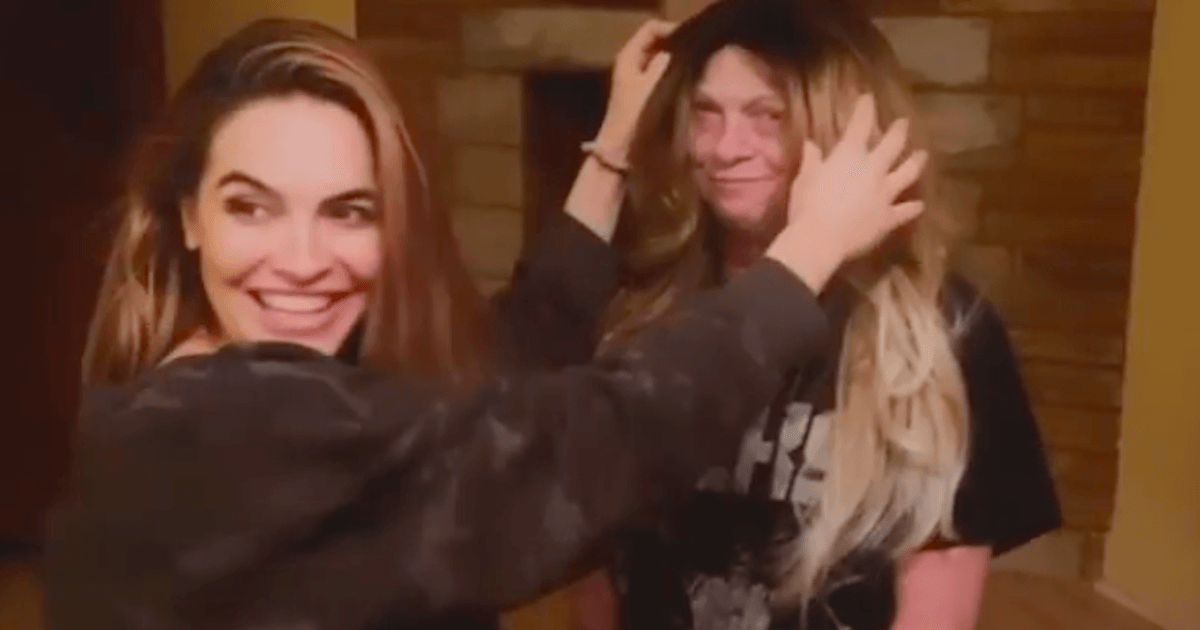“I felt like what better time to dust [the wig] off and have a little fun?” Says Selling Sunset star Chrishell Stause, who is helping her mother battling stage 4 lung cancer cope with hair loss as she undergoes chemotherapy treatment.
Stause's mother was diagnosed with stage 4 lung cancer in February, and is currently going through chemo during treatment. Side effects to chemotherapy almost always involve hair loss, and in order to keep her mother positive, Stause decided to bring out the wig she wore to the American Music Awards (AMAs) from acting and have a fashion show. In an Instagram video, Stause placed the wig on her mother’s head and gave her some tips on how to do a dramatic hair flip.
Read MoreHair Loss During Chemotherapy
Hair loss can be one of the more distressing side effects of chemotherapy but unfortunately, many chemotherapies do cause hair loss or thinning. So it's important to speak with your doctor about any personal issues that may be caused by the temporary loss or thinning of your hair.
Related: Preventing Hair Loss During Chemotherapy: Scalp-Cooling Devices
However, It's also important to remember that the hair loss associated with chemo is temporary. Hair loss typically begins about three to four weeks after a woman begins chemotherapy and will continue throughout treatment. Woman can expect regrowth around four to six weeks after they complete treatment. Patients may even experience some changes to hair color and texture when it begins growing back.
Nurse practitioner Vivian Ruszkiewicz explains what women should expect during chemotherapy
In order to help patients cope with this side effect, a doctor or nurse may be able to recommend a local wig-maker or other resources that can help slow down the process.
How Cancer Survivors Embraced Their Hair Loss
For many women, hair loss can significantly impact self esteem and mental health. However, SurvivorNet has talked to dozens of cancer survivors who learned to embrace the side effect and rock their new look. According to many women, picking out wigs was a helpful way to cope.
Once receiving her diagnosis, ovarian cancer survivor Donna Cleland struggled with how to tell her grandchildren about her disease. However, to her surprise and glee, they turned out to be her biggest support system. "Their joy was a huge help," Cleland says. "I was reading these books about how to tell children stuff, but my granddaughter thought it was just a hoot that I had lost all this hair, and she said 'well we could take it home and the birds could use it to make nests nana.’"
While many women have difficulty adjusting to hair loss, Cleland was able to find positivity in a challenging situation thanks to her grandchildren. She recalls moments where her granddaughter in particular would urge Cleland to remove her wig and proudly show off her bald head to friends, and spending time in Cleland's convertible with the roof down.
Ovarian cancer survivor Donna Cleland says her grandchildren helped her cope with hair loss
For fellow ovarian cancer survivor Diana Faison, it was her hairdresser who helped her feel confident during chemotherapy. She knew that she would eventually lose her hair during chemotherapy treatments, so she decided to visit her beloved hair dresser with her wig in hand so they could work on styling together. In the salon, her hairstylist turned her around so she wouldn't face the mirror while her head was shaved. Then, the stylist placed the wig on top of Faison's head and styled it perfectly for the grand reveal.
However, once returning home, she took her wig off in front of her husband to show him her new look, and Faison says it was a very special moment between the two of them. “We had just this grand unveiling of this new look without hair, it was a moment between me and my husband,” says Faison. “It was actually very dear. And to be perfectly honest, after that initial shock, it really was not a big deal.”
Learn more about SurvivorNet's rigorous medical review process.


